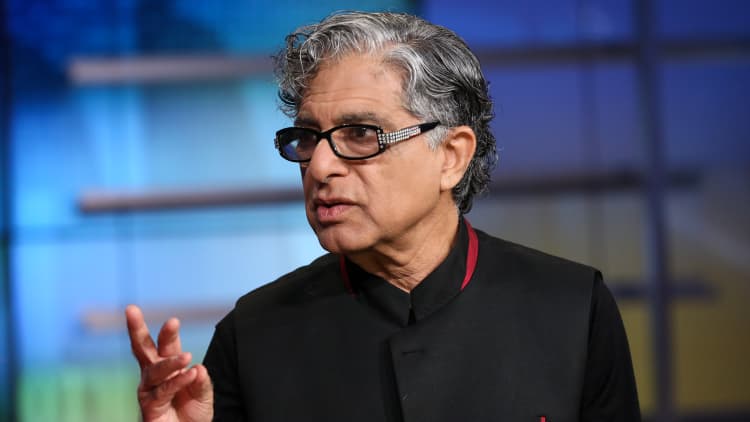Source: https://tinyurl.com/4z9s4ahe
Written by: Sharon Miller
ENTREPRENEUR LEADERSHIP NETWORK CONTRIBUTORPresident of Small Business and Head of Specialty Banking & Lending
Sharon Miller is the president of Small Business and head of Specialty Banking and Lending, which includes overseeing Consumer Vehicle Lending, at Bank of America. In addition, she is a member of the company’s management operating committee.
Celebrating 35 years of women's entrepreneurship and taking a look at what more needs to be done to pave the way for a successful generation of future women leaders and entrepreneurs.
With Women's History Month upon us, it's important that we honor, celebrate and recognize the impacts women entrepreneurs make across the business world. Women business leaders play an essential role in their local communities, our economy and the world at large. They serve as a vital part of the world's economic engine and empower the next generation of women to reach their goals as entrepreneurs.
Women made strides toward equality and advanced their mark on business in 1988 when The Women's Business Ownership Act was passed. This act, which was supported by the National Association of Women Business Owners (NAWBO), was created to address the needs of women by eliminating lending practices by banks that made business ownership more difficult for women than men.
This year, as we celebrate the 35th anniversary of The Women's Business Ownership Act as well as Women's History Month, it's important to pay respect and acknowledge our history and recognize its impact on the present. There is still work to be done as we can pave the way for a successful generation of future women leaders and entrepreneurs.
A look back at women's entrepreneurship over the last 35 years
More than three decades ago, the process to start a business changed for the better for women. The Women's Business Ownership Act was passed and empowered women entrepreneurs across the country to pursue their business goals. Prior to its passage, women business owners were required to have a man related to them as a co-signer on their business loans. The act helped reduce discrimination based on gender and allowed women to access capital to start a new business or fund their existing business.
There has been a significant increase in women-owned businesses since that milestone event. A few years after its passage, the number of women-owned businesses in the U.S. reached 6.4 million in 1992 — this represented one-third of all domestic firms and 40% of all retail and service firms, according to the United States Census. As of 2019, the number of women-owned businesses has doubled to nearly 13 million (representing 42% of all U.S. businesses), and a 2022 study showed that over the past three years, the number of women entrepreneurs grew by 48% year-over-year, which outpaced their male counterparts by 22%.
How we change the future for women business owners
Though we've made great strides over the last 35 years, women continue to face greater challenges than their male counterparts — for example, access to capital remains a critical issue for women and minority business owners. According to Bank of America's 2022 Women and Minority Business Owner Spotlight, nearly one-third of women business owners do not believe that women will ever have equal access to capital, and for those who do, they believe on average it will take nine years to achieve equal access. Clearly, we still have much progress to achieve.
To help overcome the disparity in access to capital, women need support and resources to navigate the capital landscape and identify potential sources of funding, such as equity, debt and grant capital. Banks have a responsibility to provide accessible capital solutions. There are a number of resources available right now that many women business owners don't know about. For example, in 2021 Bank of America launched the Access to Capital Directory for Women Entrepreneurs to help connect women to organizations that provide funding for women-owned businesses. Additionally, the Bank of America Institute for Women's Entrepreneurship at Cornell provides the opportunity for women to earn a certificate in business from the Ivy League university. The bank has also recently launched a public marketplace to support and showcase women-owned businesses that participate in programs to drive women's entrepreneurship.
Mentorship can also make a considerable difference in your professional growth. Over the years, I've learned the importance and value of this, both as a mentor and a mentee, and how much more can be achieved when you pay it forward and help lift other women up. This can be done through providing programs and materials, serving as a confidant to a peer or encouraging women to look into new, educational resources.
Education will continue to be key as women work to achieve full equality in business. Whether it's learning about business tactics or how to apply for grants, women must use every available resource to enhance their knowledge and reach as they begin their business endeavors. Through collaboration with fellow women and business partners, they can enhance efficiency, strengthen financial knowledge and deploy their creativity that takes their businesses to unseen levels of new success.
Many women business owners face challenges daily, but they continue to overcome adversity and remain dedicated — as we've observed over the last 35 years. I have especially seen this in my personal and professional life. We have a lot to celebrate, but I am even more excited and exhilarated to see what we accomplish in the next 35 years.


















